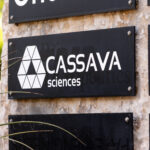After a two-year investigation including hundreds of interviews, Kim Smith and Jen Holleran published a landscape of innovation in US K-12 education. What they found was a lot of confusion because there is not a single unified landscape. There are multiple systems are operating simultaneously often in the same geography:
Traditional Efficiency: schools organized in age cohorts focused on grade-level proficiency tests
Efficiency Innovation: tech-enhanced often networked schools of choice
Future-Ready: flexible student-centered models with broader aims and opportunities
The traditional efficiency system (labeled Horizon 1 in the chart below) includes most public district schools (probably 70% of total) but is in decline as parents, students and teachers opt out and as new and conversion efficiency (Horizon 2) and future-ready (Horizon 3) schools and learning experiences are created.
Most charter schools, according to CREDO, particularly those opened by networks, are Horizon 2 models “that opened with strong results and delivered stronger gains compared to traditional public schools.”
Next Generation Schools
Smith and Hollerand described a new learner-centered ecosystem that is agentic (with student agency at the core) and defines success as thriving in life, careers and democracy. “It requires shifting from ‘schooling’ towards more focus on deeper learning. With the support and guidance of a robust community in which each student is known, connected, and engaged, learners have agency to define their path, own their data, and pursue their goals.”
When Jal Mahta and Sarah Fine went In Search of Deeper Learning they didn’t find much in core courses in Horizon 1 and 2 schools. Instead, they found agentic experiences and deeper learning around the edges in the arts, in work-based learning, and in extracurricular activities. They found deeper learning across the curriculum in newer (Horizon 3) schools like High Tech High where powerful learning experiences are co-authored, community-connected and immersive, extended and challenging. They are occasionally awe-inspiring and frequently flow-producing. Products are often public and valuable to a community. Deeper learning experiences not only develop important knowledge, skills, and character, but they also build (what Charles Fadel calls the Drivers) motivation, purpose, agency, and identity.
Inspired by the expression of new learning goals (see The Portrait Model) and next generation schools, the Getting Smart team distilled a set of learning design principles:
Accessible: All students deserve access to high quality learning opportunities that support long term success
Personalized: Every learner is different. By providing personalized approaches to meet challenging outcomes, we increase the chances of success for every student. Competency-based approaches ensure proficiency on all outcomes.
Purposeful: Learning experiences should help students find/develop a purpose to make a difference in the world.
Joyful: When learning leads to awe, wonder, joy, and engagement, outcomes are stronger. Joy can be supported by strong relationships with others (peers, mentors, teachers, etc.).
Authentic: Building learning experiences that are culturally connected, contextualized, relevant, or real-world increases engagement and outcomes.
Challenging: Every learner deserves to be intellectually challenged with high expectations. We believe in experiences that build opportunities for flow with the appropriate balance of challenge and engagement.
Similarly, Digital Promise says, “Powerful Learning is personal and accessible, authentic and challenging, collaborative and connected, and inquisitive and reflective.
Dr. Yong Zhao describes the Horizon 2 “essence of personalized learning is to create individualized paths for students, adjusting the difficulty and pace of the material based on their progress and understanding.” However, another emerging (H3) version of AI-powered personalized learning is drastically different. “It does not aim to help all students achieve the same outcomes. It is not to allow students to move along the same path to the same goal. Instead, it is to help each student to become uniquely great in their own way…Since every child has strengths and deficiencies, we should shift our mindset of education toward developing the strengths of each child instead of fixing their deficiencies.”
Zhao explains the need for entrepreneurship and difference making: “In the age of AI, the first thing students need to do is to find problems worth solving because when they enter the society, they need to create value for others using their unique greatness. With AI and related technology, human greatness can be drastically enhanced. Today, everyone needs to have an entrepreneurial mindset as everyone has the potential, opportunity, and perhaps necessity to create solutions to problems with the assistance of AI.”
Together, these design principles outline next-generation (H3) environments and experiences. The three routes to create H3 supply is new school development, learner experience networks, and school transformation.
New School Development
One in three students in the U.S. attended a new public school created during the last three decades. A 2020 Carnegie report suggested that new school development has been an important change strategy. Because school improvement typically yields better but not different, new schools are the primary way new H2 and H3 school models are introduced. “The schools of the future that our society needs won’t come from transforming our existing schools. They’ll have to come through launching new versions of schooling from new value networks,” explained Thomas Arnett, Christensen Institute.
A quarter of the 31,000 new schools opened in the last 30 years were charters. The growth of H2 was boosted by charter networks from 1998 to 2012 (e.g. Achievement First, Alliance, Aspire, IDEA, KIPP, Harmony, Success Academy, Noble, Uncommon, and Uplift). Charter networks were cited in the most recent CREDO study as one of the few sustained signs of progress at scale.
About 500 charter schools open each year (with a pandemic dip) but about 200 charter schools close each year. With blue state charter limitations and lack of facilities funding, the 300 net new charter school growth is likely to continue through the end of the decade. Dated authorization practices will trap most of the new supply in H2.
Texas High School Project (which became Educate Texas) was a big successful H2 project resulting in 200 early college high schools and, in the last decade, more than 200 P-TECH schools that add work-based learning.
The early seeds of H3 student-centered models can be traced back to Ted Sizer and the Coalition of Essential Schools and the project-based networks that got their start around the turn of the century (Big Picture, Edvisions, Envisions, High Tech High, New Tech Network, EL Education, Internationals). Most of these deeper learning schools opened as a new school of choice, about half district and half charter.
School districts open a few hundred schools a year to support growing populations. Some H2 school districts are evolving to H3 by opening new models:
NYC opened more than 400 schools (while closing dozens of failing schools) during the Bloomberg administration (2002–2013) and about half were early H3 models.
El Paso ISD kicked off a 2015 turnaround with 6 New Tech Network academies (now 13).
Kettle Moraine SD opened Health Sciences, KM Global, KM Perform, KM Connect, and KM Explore (K-8)
Cajon Valley USD opened Bostonia Global, Paramount USD opened Odyssey STEM Academy, and Poway USD opened Design 39 Campus.
In Kansas City, Park Hill SD opened LEAD Innovation Studio and Liberty PS opened EDGE.
Tacoma PS opened SOTA, SAMI, and IDEA.
School districts close about 800 schools each year due to shifting enrollment. Closures are likely to jump to 1,200 or more for a few years with post-pandemic shifts. Closures are always challenging events for local communities but at their best, they signal new school opportunities. The total number of schools will climb through the end of the decade with continued growth in microschools (but more private than public).
Homeschooling, specifically microschools in homes and community spaces, is a vector of H3 growth. It got a boost from the rise of virtual learning in the first decade of the century and from microschools and cooperative models that exploded during the pandemic (e.g. Prenda, KaiPod, Outschool) aided by the expansion of ESA funding in 17 states. Home schools include a couple of varieties:
Informal cooperative agreements of multiple virtual charter school parents (one multistate operator said 40% of students benefited from cooperative arrangements in 2022),
Informal cooperative agreements of homeschool parents receiving ESA funds, and
Private microschools where all or most of the tuition is ESA-funded (like those featured here).
Of the 3.4M students likely to be in new options by the end of the decade, maybe half will be H3 models. If that leaves 42M students in traditional public school options. That suggests a massive new school opportunity and why we’ve launched a microschool initiative to support the formation of next-generation models in school districts, in charter networks, and home schools.
Microschools offer a faster and less expensive approach to new school development, one that can supplement and accelerate traditional approaches. But even with aggressive acceleration in the next five years, the shift to H3 requires new strategies like learner experience networks.
Learner Experience Networks
A growing number of initiatives are inserting H3 experiences into H1/H2 schools. It’s a faster and cheaper entry point than new school development and scales more rapidly. The downside to these LX networks is that it’s typically a partial day and can be limited to upper-division high school students.
Ten years ago, the Blue Valley Center for Advanced Professional Studies expanded access to career-connected learning for juniors and seniors in southwest Kansas City. Its success spurred the development of two learner experience networks:
CAPS Network has grown to 105 affiliates nationally that launch graduates into postsecondary with purpose and career-relevant skills.
Three dozen Kansas City metro area school systems convened by the Kauffman Foundation are promoting Real World Learning experiences (dual enrollment, client projects, internships, entrepreneurial experiences) in 85 high schools.
NFTE, Uncharted Learning, and JA are promoting entrepreneurial experiences nationwide. StartupEd leads a statewide pitch competition in Indiana. The US Chamber of Commerce Foundation is sponsoring Employer Provided Innovation Challenges (EPIC). Nine regional intermediaries are hosting challenges and recruiting youth participants. After 30 years of promoting work-based learning through a network of more than 600 career academies, NAF added KnoPro, a client-connected project platform, to extend access across and beyond the network. Find the Why is a client-project challenge network in the state of Nebraska and growing. With continued investment and innovation, these and other LX networks could reach half of high school students by the end of the decade.
School Transformation
School improvement efforts typically yield incrementally better but not different results. The multifaceted transformation required to move from one horizon to the next is rare especially early cycle. It requires leadership, capacity, and models of success (often found in new school development).
Gates Foundation funded efforts (2000-2006) to catapult 800 struggling H1 high schools into H3 models largely failed (compared to successful new school development). More measured and deeply supported (H1 to H2) Linked Learning efforts sponsored by Irvine Foundation resulted in large scale high school transformation across California with subsequent national scaling. Some blended learning networks (many following the Horn/Staker playbook) made a successful H1 to H2 transition. The 17 state sponsored networks advancing competency-based models (most H1 to H2) showed modest results with little adoption outside the networks.
A few collaborations like League of Innovative Schools and the lighter weight Future Ready Schools are networked H2 to H3 transformation efforts. Like earlier H1 to H2 efforts, these collaborations of the nation’s best school systems suggest that transformation is hard. The rise of generative AI could make H2 to H3 transformation easier, faster and more widespread. New AI powered platforms like Schooljoy power personalized pathways. ASU spinout Lifelab Studios is reimagining growth experiences for justice involved youth. Playlab powers dozens of educator built apps.
Conclusions
New school development is the early key to building H3 supply. New schools can bundle new goals, new strategies and new tools into coherent models. While they expand access to next gen learning, they illustrate the way forward for transformation. This transformation is multifaceted and can be technically and politically challenging. AI will lower the technical complexity of transitioning to agentic and experiential pathways (while introducing new concerns).
Learner experience networks can scale relatively quickly but are typically partial day programs for upper division students. ESA funding in a dozen states (while mostly a private school subsidy) creates an opening for innovative new models and expanded family agency.
If large urban districts remain preoccupied with traditional improvement and school closures, they will stagnate in H1/H2 and increasingly be displaced by new H3 supply (as context variables permit). Even with aggressive new school development and LX networks, the majority of students will rely on late-stage transformation as proven models, deep capacity and new policy incentives expand.
The post Why We Need More New Schools (Even with Enrollments Down and Closures Ahead) appeared first on Getting Smart.
Kim Smith and Jen Holleran reveal multiple systems in US K-12 education, from traditional to future-ready models, highlighting innovation and transformation.
The post Why We Need More New Schools (Even with Enrollments Down and Closures Ahead) appeared first on Getting Smart. Learning Design, New Pathways, innovation, Learner-Centered, Microschools Getting Smart





